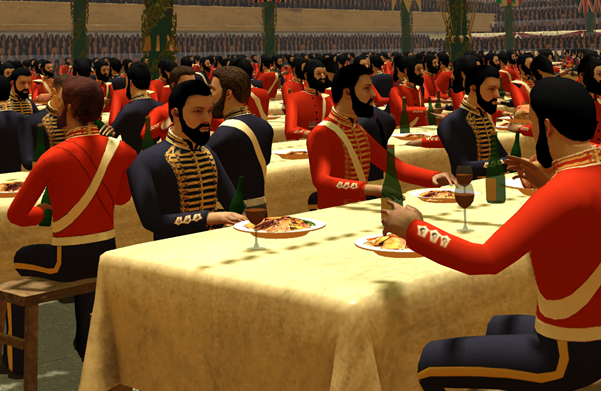Peel X are based in the UK and, since the company launched in 2012, has carved a name for itself for
expertise in digital storytelling.
With a unique approach to the complexities of creating digital experiences through telling a digital story, the team create visionary experiences using augmented reality, virtual reality and new technologies.
Digital stories focus on immersive experiences
By transforming the tenets of traditional storytelling into the kind of interactive experiences that bring a specific topic to life, Peel X create unique digital storytelling workshops for each project.
Before looking at the specifics of the digital stories that Peel X tell through melding virtual worlds seamlessly, here’s a breakdown of exactly what’s meant by digital storytelling.
What is digital storytelling?
In the simplest terms, digital storytelling uses various multimedia tools to bring stories to life. Generally, a short form of digital media, digital storytelling is accessible to every participant in the digital world.
For example, every time a social media user creates video clips showing themselves in some way – that’s digital storytelling.
In 2023, there are so many ways for people to use digital storytelling to illustrate a particular point, or by raising awareness of a specific topic or to share a personal experience.
Why is storytelling so important?
While the digital world has created unprecedented space for people to share their personal tales, technical expertise or to allow for exploring life collectively, storytelling is part of what it means to be human.
This means, of course, that storytelling – whether spoken or written – has had a purpose throughout history. The only thing that has changed is the medium through which people tell stories.
The ancient art of storytelling has shaped history and allows for a greater understanding of each other. From primitive cave paintings going back 30,000 years found in Chauvet, France to the first printed epic carved into city walls in 700BC, the use of storytelling takes in everything from religious instruction to inspiring change.
As literacy skills became more accessible over the centuries, fairy tales and newspapers became popular throughout the 17th and 18th century. The concept of the ‘story circle’ is one that has remained the same over the centuries – people still today gather in places like theatres and in each other’s homes to
tell each other the stories that matter to them.
The first visual depiction of storytelling
In 1826, visual storytelling began with the use of photographs. This developed over the next few decades into the use of full colour still images to craft and share a narrative.
Digital storytelling began when the television changed the world in 1939, allowing for all kinds of images, editing, camera use, music, audio and film to completely revolutionise storytelling.
Creativity evolved along with the AV hardware available, allowing for the creation of everything from short films to the evolution of script writing to persuade the audience of a specific viewpoint, as well as educational purposes.
What is the digital storytelling range?
In the early 1970s, video games arrived. This opened up a whole new form of telling a digital story, with interactive elements and immersion. Immediately popular particularly with young people, this form of digital production is constantly developing, even today.
Music video clips and MTV brought the idea of music and images together in the 1980s. By the turn of the century, of course, the web was becoming one of the main research portals for students and services.
Before long, this had evolved into the 21st century media platforms and social media channels that now lead our lives in unprecedented ways. Digital storytelling through multimedia elements has been absorbed into normal practice.
That’s not all, museums have been utilising interactive display points to aid with their visitor journey. In a £17.3 million regeneration project of Derby Museum of Making, Peel X developed a suite of interactive displays that allow visitors to explore the history and evolution of making in Derby over a rich 300 year history. The museums innovative interpretation strategy saw it achieve finalist status in the 2022 Art Fund Museum of the Year Award.
The interactive displays allow visitors to explore the museums vast collection of objects via touchscreens and a visitor app – users can curate their own ‘trail’ and enjoy bespoke exploration of the collection tailored to their interests. A multi-screen experience allows visitors to select from a vast array of ‘makers’ across Derby and hear their story. There’s also interactive touchscreen displays that explore the vast reach of manufacturing from Derby – visitors can interact with a rotating globe, delving deeper into the global reach and impact of products made in Derby across the world.








